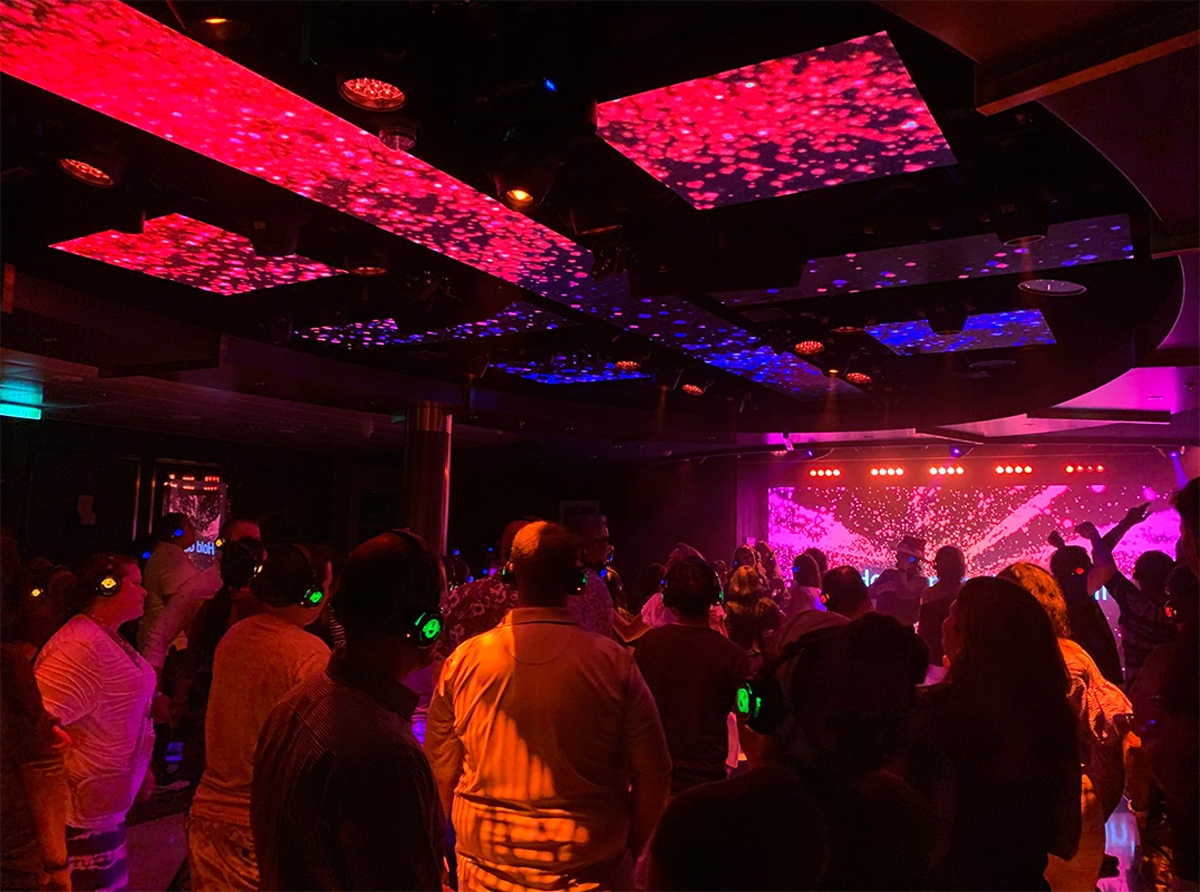Chris Werner – Experiential Light
Posted on December 7, 2021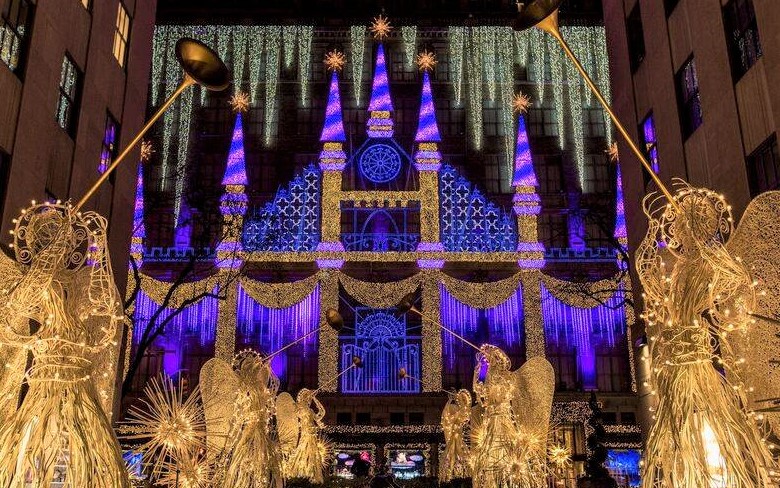
Asked what he likes most about his profession, this award-winning designer quickly points to something that is also among his least favorite things: travel. Crisscrossing the globe on projects, is, he admits, exhausting. But, as he sees it, any road weariness is more than made up for by the experiences he collects along the way.
Experience, in all its power and complexity, is at the heart of Werner’s design philosophy. Creating and sharing it is his ultimate end point when he sets about the process of turning vision into reality. However massive and technologically intricate his projects are (and many are indeed both), they are crafted not merely to been seen, but also to be absorbed to the fullest, moving those who encounter them on a multitude of levels to the point where they will be remembered as “an experience.”
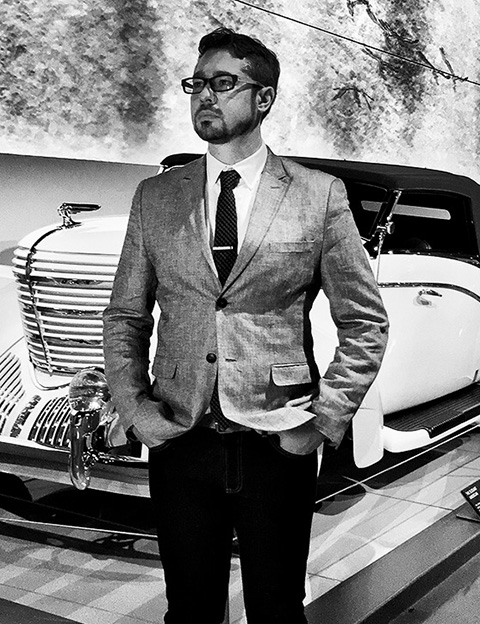 Working from this perspective, Werner, the owner of Los Angeles-based Chris Werner Design, focuses intensely on the connective qualities of his creations. It is not just how they will look on computer renderings that matters, but also how they will interface with real people in real time. This results of this vision are clearly evident in projects like his Saks Fifth Avenue Holiday Show, and NightGarden Miami, as well as his other work including EXPO 2010 in Shanghai, Sea World, Britania, The Peterson Automotive Museum, Tesla corporate events, and Busch Gardens.
Working from this perspective, Werner, the owner of Los Angeles-based Chris Werner Design, focuses intensely on the connective qualities of his creations. It is not just how they will look on computer renderings that matters, but also how they will interface with real people in real time. This results of this vision are clearly evident in projects like his Saks Fifth Avenue Holiday Show, and NightGarden Miami, as well as his other work including EXPO 2010 in Shanghai, Sea World, Britania, The Peterson Automotive Museum, Tesla corporate events, and Busch Gardens.
The winner of numerous Illuminating Engineering Society awards, as well as a Live Design Excellence Award, Werner shared his insights into creating experiences through design
You’ve been at the forefront of weaving technology into design. How do you harness the power of technology without having it overpower the human side of your creations?
“To some extent, I think this is getting a little easier than it used to be. For better or worse, more of our day-to-day lives are filled with technology. Using technology to deliver narrative content, especially in an immersive environment, is less jarring to audiences than it was five or ten years ago. But, I think the answer to your question lies in attempting to hide the mechanics wherever possible. The goal is to allow the viewers to see our experience the effects of the technology while preventing them from seeing the source. Hide the cables. Obscure the lighting fixtures. Decorate the sensors. These are the same tricks the themed entertainment folks have been perfecting for decades.”
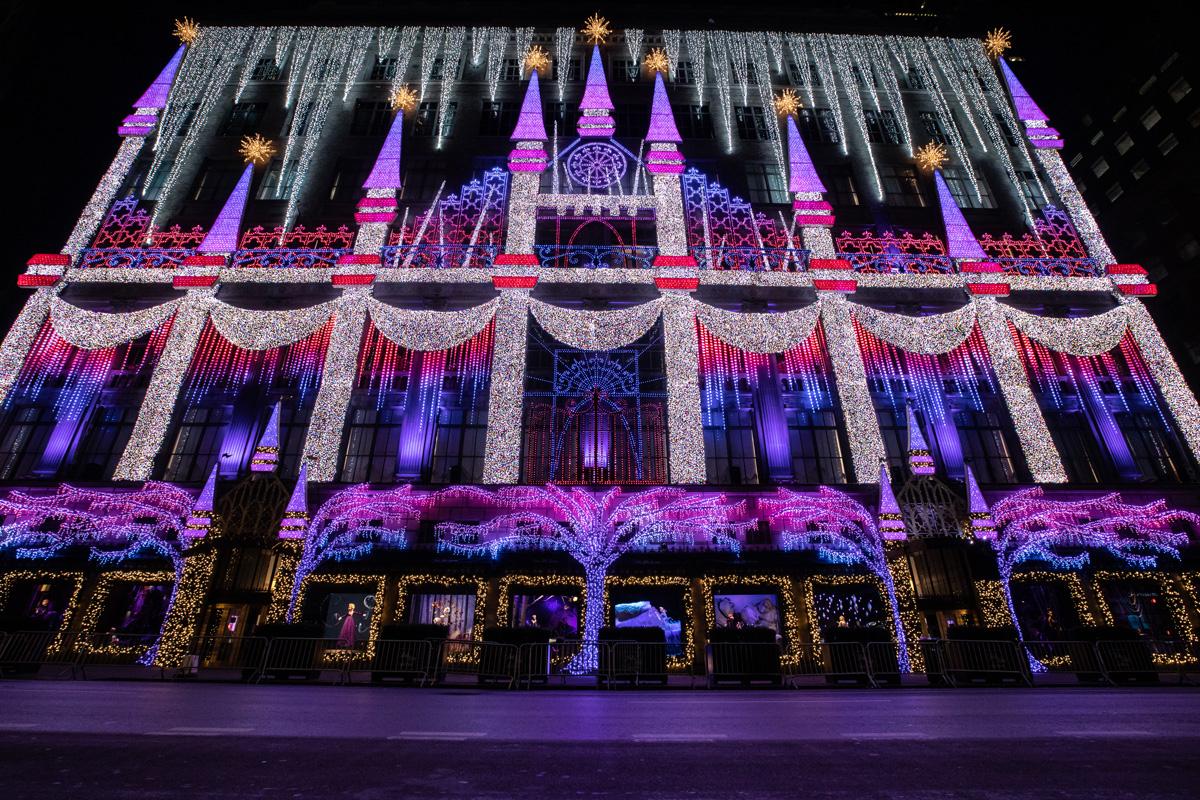
Does the appearance of new technology give you new ideas? Or is it just a matter of technological advances allowing you to express ideas that have already been swimming around in your head?
“I am definitely inspired by new technology. I am always mentally cataloging visuals related to new technology. Then, when I read a script, receive a creative brief, or hear a piece of music, those images come flooding in.”
Many of your projects, such as NightGarden Miami, which covered over 80 acres, and the Saks Fifth Avenue Holiday Display with over 300,000 points of light, are massive. It must seem overwhelming at the start. So, where do you begin with such a project? Is there a design element you typically start with?
“I tend not to start with any one particular design element. But, I almost always find myself zooming-out until the project — of whatever size — fits on a single screen or single piece of paper. I begin identifying critical areas and elements, effectively breaking it into manageable chunks. As I apply ideas or solve problems related to those chunks, I keep zooming out to that original view to ensure that the concepts being developed still relate to the whole. This is a good opportunity for evaluating the distribution of equipment, the allocation of the budget, overall staffing needs, or the cohesiveness of the design.”
The Night Garden project we just mentioned involves weaving natural foliage into your design, while Saks centers around lighting a 10-story building in Manhattan. Do you approach design differently when it includes a natural setting?
“The approaches for the two projects are decidedly different. While both include an awareness of a guest’s viewing environment, the delivery of the material requires different mindsets. The holiday show at Saks Fifth Avenue is very presentational – a three-minute event, on a repeating schedule, experienced in a linear manner, with a prescriptive viewing location. It’s very much like creating within a proscenium theater.
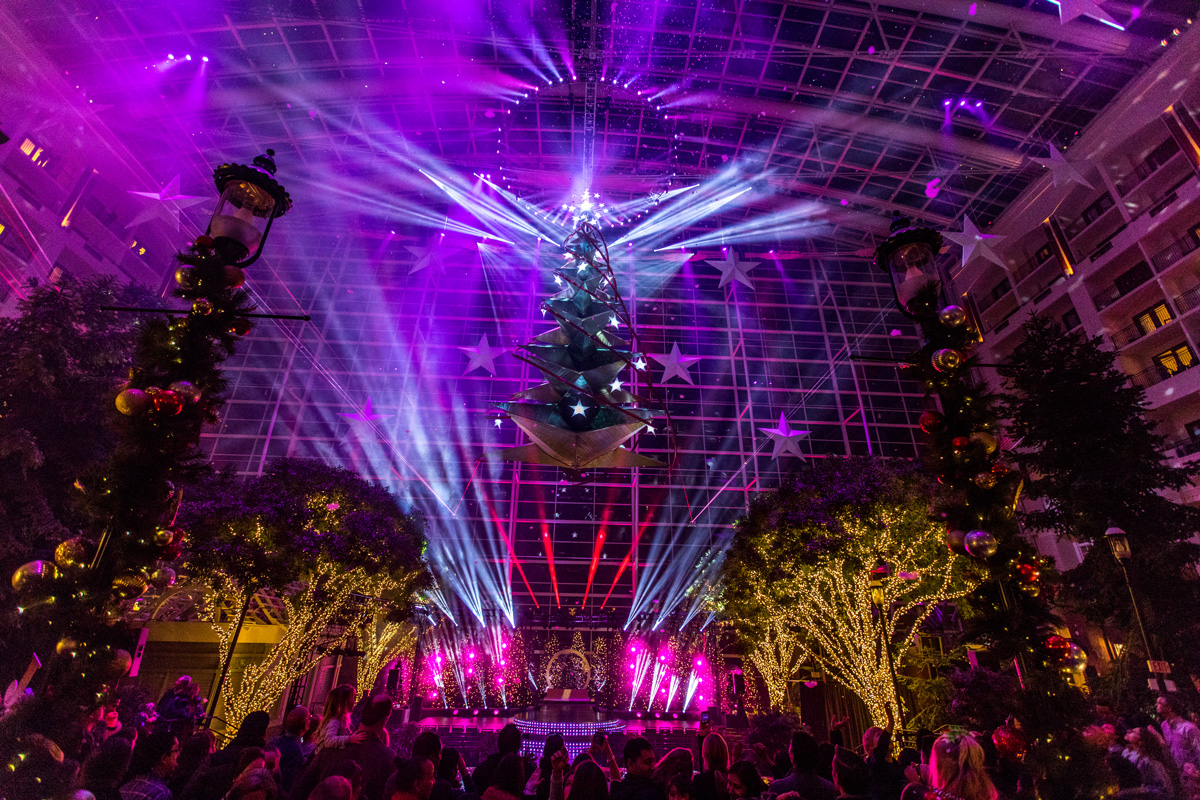
“On the other hand, a project such as NightGarden Miami does not rely on scheduled viewing and guests are encouraged to look all around the garden, at their own pace. This is like designing within an architectural space. I can encourage guests to look in a specific direction at a specific time, but I have to curate the entire space to support our story. The added challenge within NightGarden Miami was the need to incorporate the technology necessary to create a vibrant, immersive world within the delicate and beloved gardens.”
Walk through exhibits like NightGarden Miami have grown in recent years. Do you think we’ll continue to see more of them?
“The cancellation of thousands of events due to Covid-19 left people hungry for things to do with their families. It also left many venues with a revenue shortfall that had to be addressed. The confluence of pandemic-related circumstances with the growing want for immersive experiences and the general public’s desire to capture Instagramable moments is fueling this current boom. I don’t think the market is yet saturated. I believe that there is room for quite a bit more, if the creators continue to push boundaries and innovate. I suspect we’ll see exciting things from ground-breakers within that genre – like Meow Wolf, ARTECHOUSE, teamLab, and Moment Factory.”
Video and pixel mapped effects have also become more prevalent in exhibition design. How does that affect your work?
“Here’s my over-simplified view of a huge and still-growing industry: Fifteen years ago large-scale video was just becoming affordable and I interfaced with it on occasion. Ten years ago every large project had video and it was in the periphery of my design decisions. I was dabbling in the creation of video content. Then, five years ago video as light or light as video became a component of nearly every project of mine. My team frequently became the source of that video content or we were closely collaborating with creative teams to integrate both disciplines within a single vision.
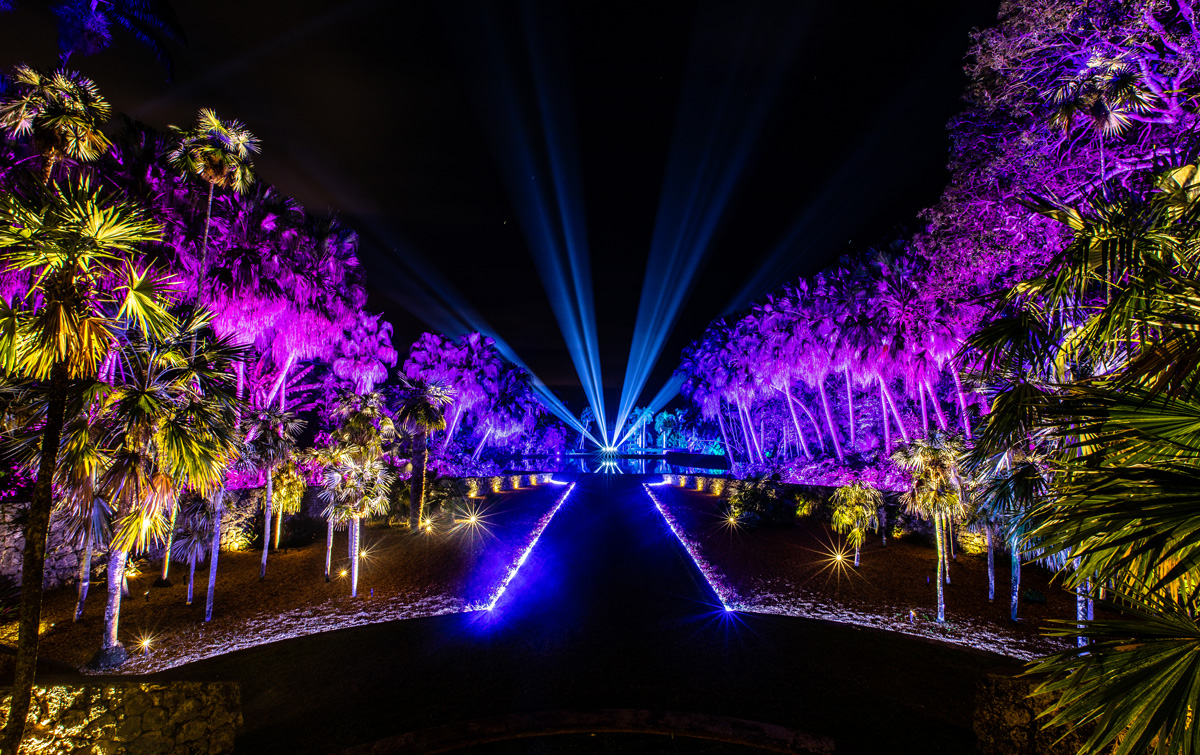
“Move on to today, and this trend hasn’t slowed. It has forced me and my collaborators to learn new software, hardware, and techniques. It has caused me to realize that the “hat” I wear changes from production to production and will continue to do so. The lesson to be extrapolated is that perhaps the old mentality of “stay in your lane” regarding design disciplines might be outdated. Learn everything you can about every area of design!”
You were involved in creating the Dream Cube at Expo 2010 in Shanghai. At the time it was the largest 3D LED screen ever built. That structure was overwhelming, but somehow it immersed rather than overpowered visitors. How was this delicate balance achieved?
“We had an all-star group of collaborators for that project. Noah Mitz and I tackled it under Bob Dickinson of Full Flood. We were partnered with creative leadership from ESI Design, Don Mischer Productions, Spinefex Group, and ProCon (now PRG). The culture fostered on that project allowed for every voice to be heard, each idea to be considered, and all concerns to be appropriately weighed.
“The Dream Cube was the first time I had been involved in leveraging that much technology to tell a story! Our team benefited from having a compelling message to share – that of environmental responsibility. The importance of the message and the nature-based imagery we were drawing upon provided a very clear aesthetic compass for the entire team.”
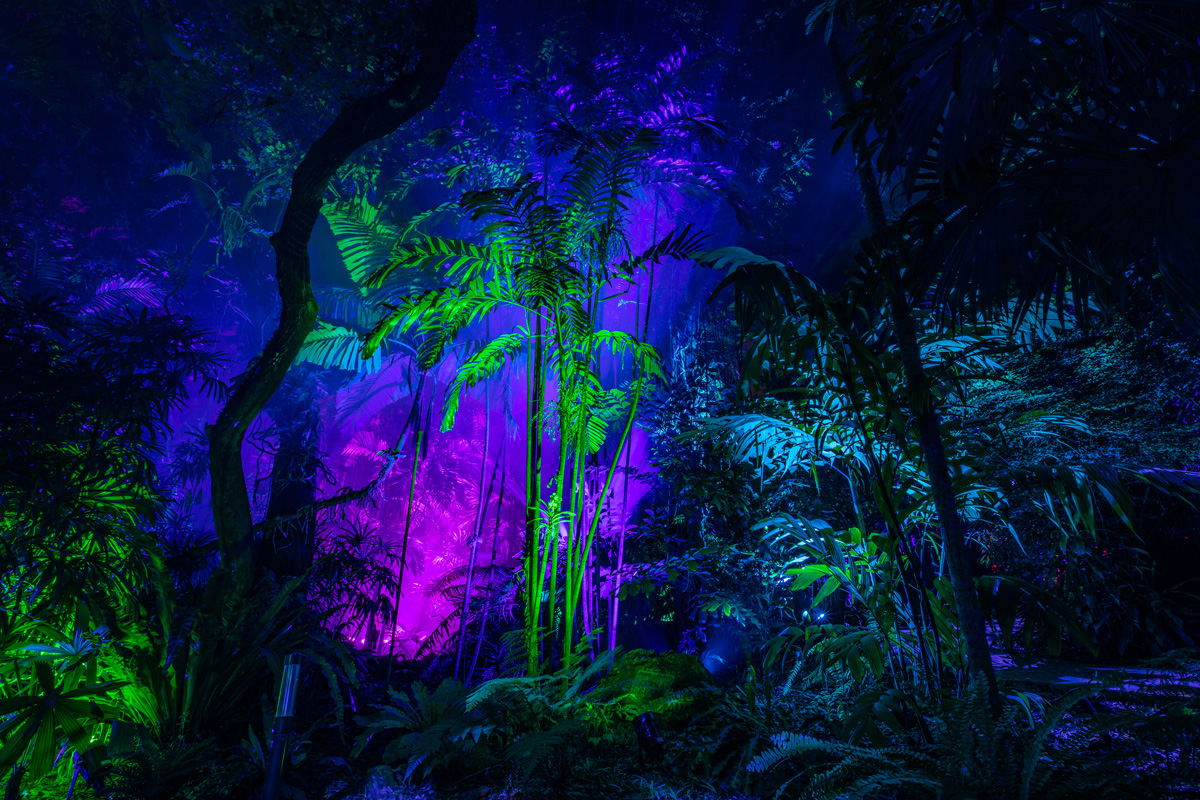
On the subject of using technology: if you fast forwarded 11 years, would the Dream Cube had been different today, given the advances in technology that have taken place since 2010?
“Yes! I’m sure it would be spectacular. It’s rare that a creative team is given so much freedom to explore cutting-edge technology while also having access to the funding to implement it on such a scale. If designing the Dream Cube today, I assume that we would be leaning into AR and XR technology to supplement a brighter, more versatile, and more efficient lighting package. I expect we’ll see a lot of these advances at EXPO 2020 in Dubai, which unfortunately was delayed due to the Pandemic.”
Looking at a more traditional project, you did a brilliant job weaving the view of the river into your design at the Gaylord National Christmas on the Potomac. Can you tell us a bit about how you approached that project?
“We were fortunate to have some exciting parameters. The venue was 19 stories high, a fountain, adequate overhead rigging positions, and a wall of glass, often revealing jaw-dropping sunsets. During our initial meeting with Gaylord National’s management, the Producer, Matt Davenport, and I immediately recognized two important details that influenced the project’s evolution:
“First, guests can view the experience from hundreds of possible locations and a variety of elevations – our design must fill the volume of the space. Second, the glass curtain-wall facing the Potomac River is very reflective – our luminous elements must be double-sided to take advantage of that reflection.
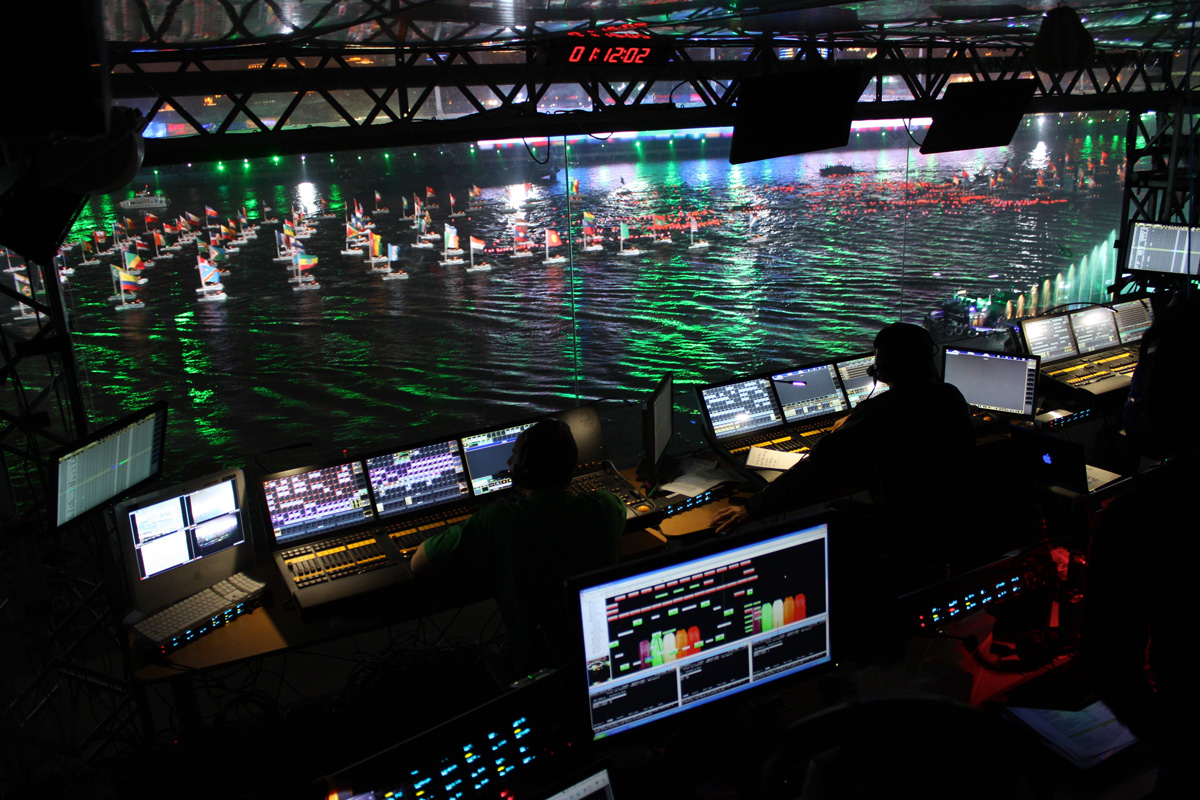
“Those discoveries led our teams to develop exciting show concepts and a lighting rig that supported a large ‘spectacular’ with a bespoke audio track, lighting, fountains, and lasers as well as a small stage production on the deck. “
In addition to exhibition and architectural projects, you’ve done extensive work in theatre. Do the two types of projects feed off one another? Are you able to extrapolate skills and insights learned in one and apply to the other?
Within my own projects of both types, I often use a lot of the same technology. Lighting treatments or effects discovered for one can often be applied to the other genre in the future. Additionally, the basic elements of storytelling, as well as how various qualities of light can influence a guest’s experience, are applicable to both. Personally, I try to keep some balance of the two types of projects because they fuel me in different ways.”
You’ve also done work for the LA Opera. How does opera differ from theatre?
“My work for LA Opera was limited to special events. For a few years, I was a part of their opening night gala. For those projects, we were always trying to create an environment that was enveloping the guests in light. The theming was based upon the opera opening that season and we attempted to overlay a story-telling structure to the evening – tying courses of the meal to acts of a show, incorporating dramatic lighting changes throughout the night.”
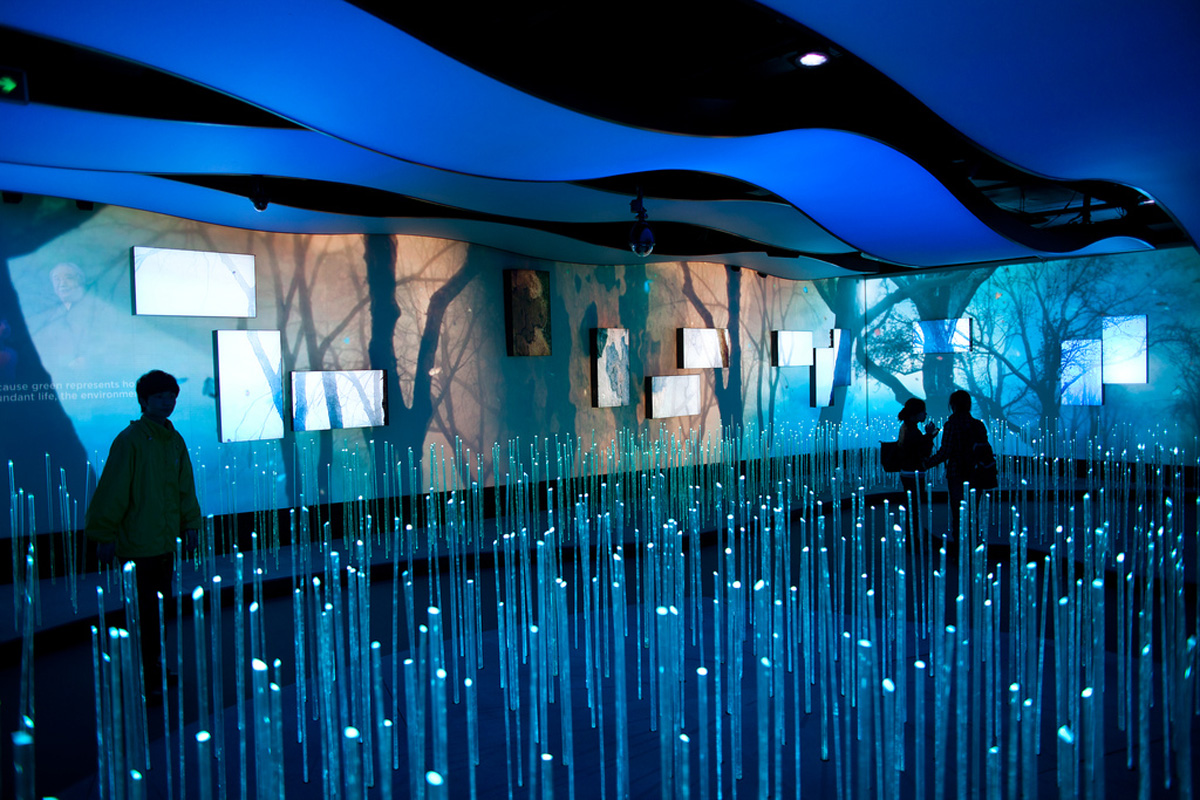
Looking at your overall body of work, are there any projects that standout as being most influential in shaping your career? Ones that taught you something about yourself as a designer?
In 2010, I worked on the opening ceremony for EXPO 2010 in Shanghai that we discussed earlier. It was the hardest project that I had ever worked on and the scale was immense. Our outdoor show incorporated hundreds of buildings at the exposition site, two bridges, a river, hundreds of boats, an incredible pyro display, and the entire skyline of Shanghai as a backdrop. The challenges felt insurmountable at times, the schedule was exhausting, and the tasks which we asked the crew to complete were on the edge of impossible. The show happened and it was quite beautiful. I learned a few lessons about how I want to continue with my career…
- The success of a project hinges on the quality of your crew.
- I need to continuously evaluate my perspective within a situation in an attempt to understand the opposing view and just how big of a deal an issue may or may not be.
- I want my friends on my team when I endeavor to work on complex projects.
- I will never again be intimidated by scale.
How did you get started as a designer?
“Like many, I began on the stage crew in high school. I loved it so much. As an awkward teenager, I found a supportive friend group, some fantastic mentors, and an unexpected career path. At 16, while working for a small non-profit theater company in Pittsburgh, I met a designer named JR Krauza. He was willing to meet me at a diner and share some guidance. At that meal, he gave me a stage design textbook, a plastic drafting template, and an offer to make an introduction or two. That was one of a handful of events that I can identify as turning points. JR introduced me to Cindy Limauro (Lighting Design Professor at Carnegie Mellon) who introduced me to Paul Gregory (founder of Focus Lighting) and Ken Billington (Broadway designer).
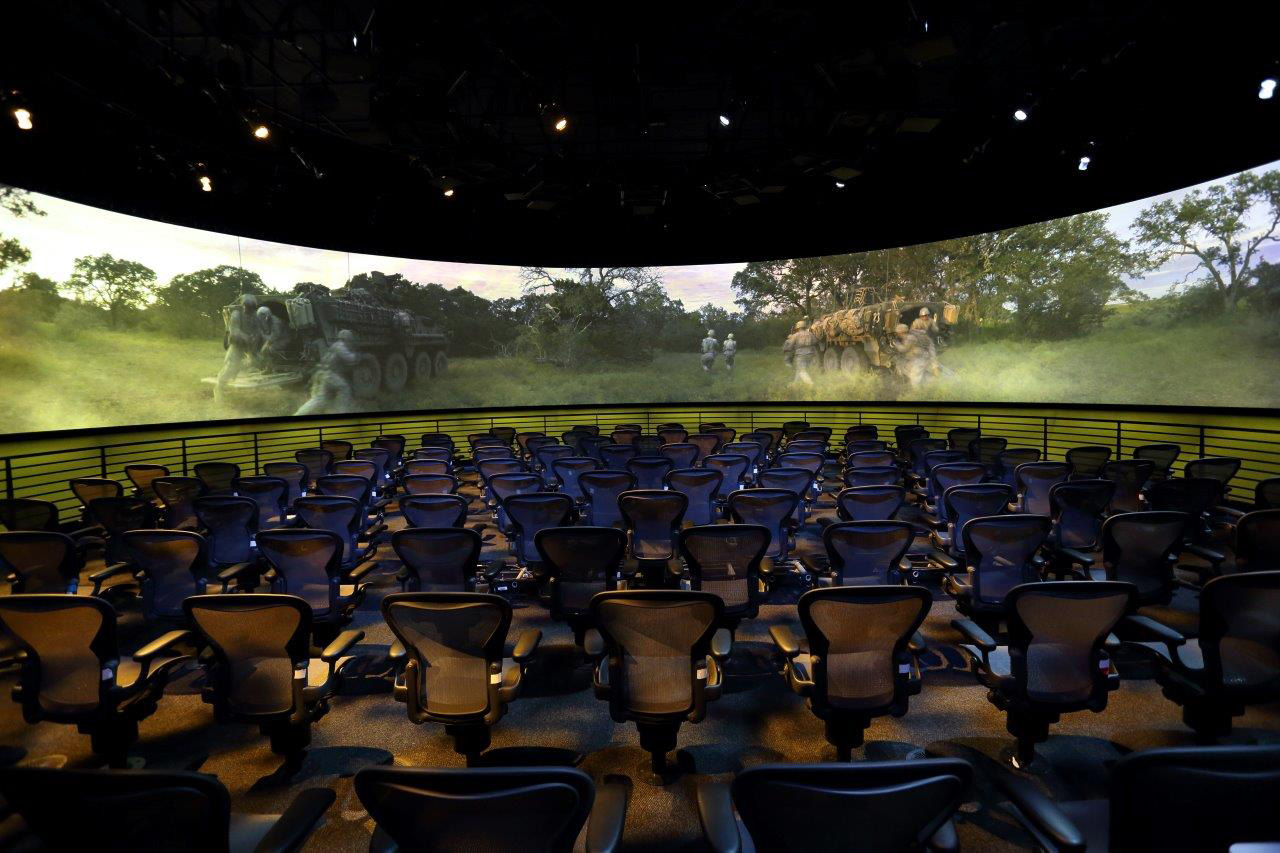
“The extensive web of relationships which developed from those people remains the core of my personal and professional life.
“My formal education was at the School of Drama at Carnegie Mellon. I spent a few summers working at Busch Gardens, a theme park in Williamsburg, VA. Upon graduation, I worked for a few years at Focus Lighting, in NYC. Then, I ventured out on my own with a brief stint in R&D for an LED fixture manufacturer. I’ve been based in Southern California mixing entertainment and architecture since 2006. Even with a bit of an origin story, I’d like to think this is just the beginning.”
At one point you were an adjunct professor at the School of Drama at Carnegie Mellon. Is there one lesson about design that you hope all students took away from their experience with you?
“That campus is bursting with creativity and I benefited so much from being surrounded by that energy and enthusiasm. I suspect I learned as much, if not more, from the students as they did from me. If those students took away one lesson, I hope it’s ‘be nice.’ I tried to share my opinion that you can be successful and be a good person. Your ‘competition’ isn’t your enemy.”
Some of your students went on to become accomplished lighting designers. Are there personality traits that are mostly likely to engender future success in this field?
“The students with whom I shared class-time were a remarkable collection of artists, technicians, and managers. The traits that standout within the group of successful folks include a tremendous level of curiosity, a fearless outward persona, and an unending desire to improve.”
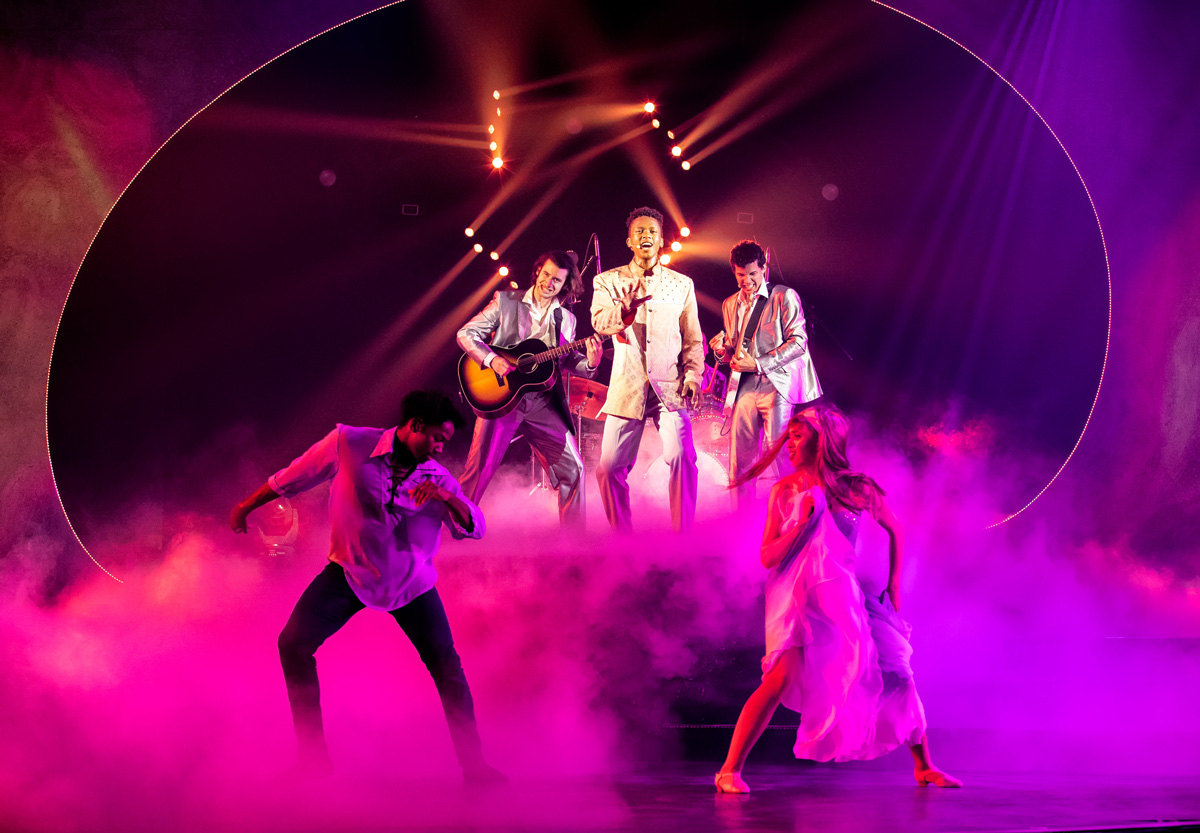
Is there one thing about your job that you like above all others?
“The most exhausting component of my job is the travel. It is also my favorite thing about this very unusual profession. I have found myself repeatedly working with a few of the same kind, smart, and adventurous people. I’ve done a lot of my traveling with them. We’ve celebrated successes, endured failures, met new friends, and tried local cuisines all over the world. I’ve caught sunsets, embarrassed myself, and cheated death on four continents… so far. If we’re not doing this to collect amazing stories, why bother?”
How would you like to be remembered as a designer?
“I hope the audiences remember the experience more than my individual contribution.
I hope my colleagues remember me as a friendly collaborator, a reliable team member, and a boundary-pusher. I hope my clients remember my phone number.”
